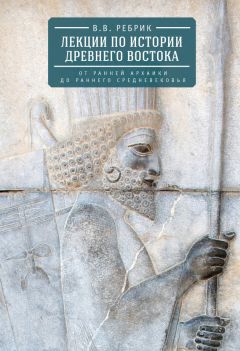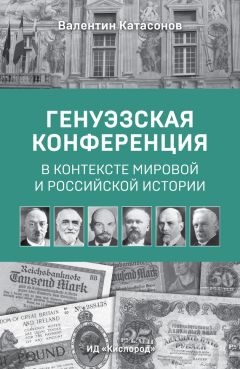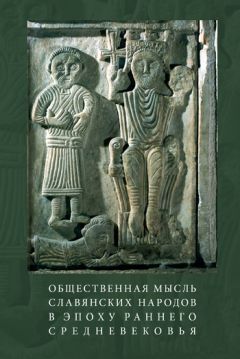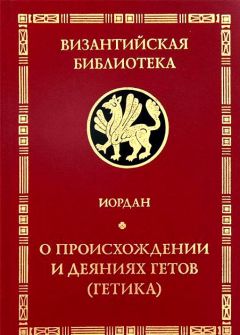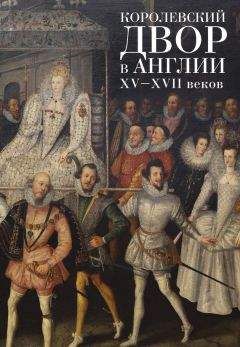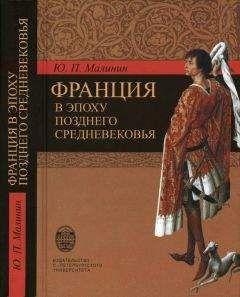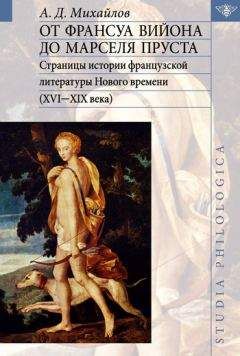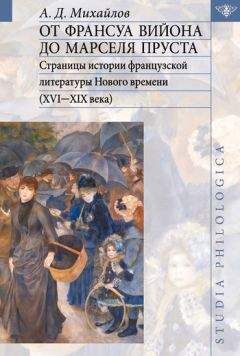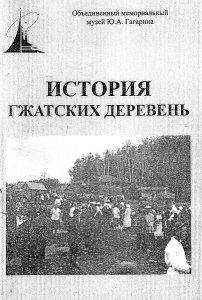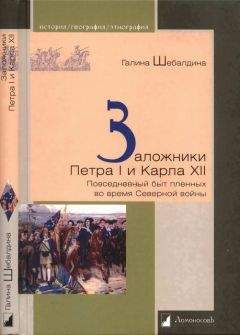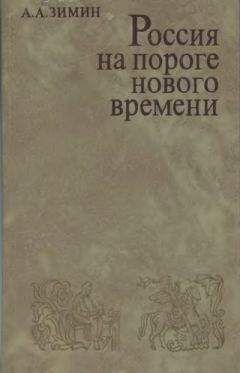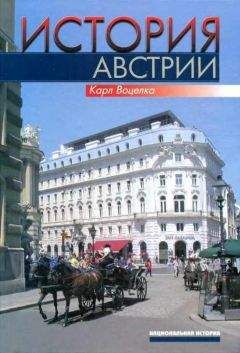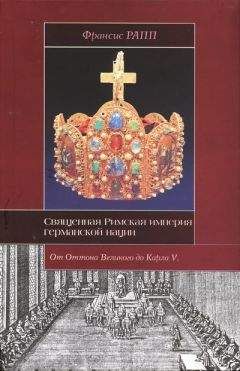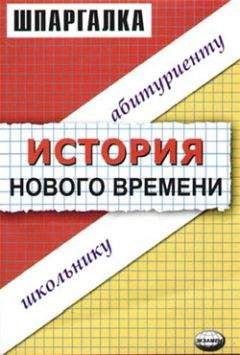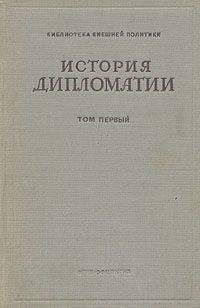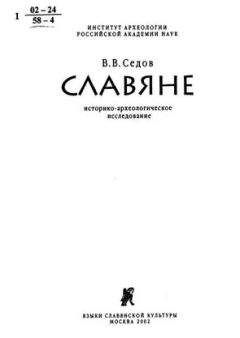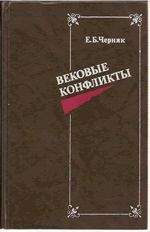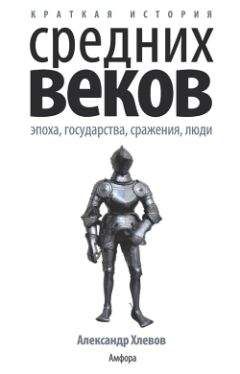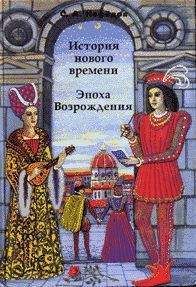Сборник статей - Рассказы о путешествиях, паломничествах, миграциях в источниках Средних веков и раннего Нового времени. Материалы конференции
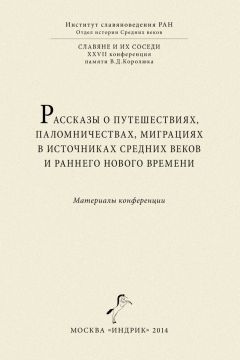
Все авторские права соблюдены. Напишите нам, если Вы не согласны.
Описание книги "Рассказы о путешествиях, паломничествах, миграциях в источниках Средних веков и раннего Нового времени. Материалы конференции"
Описание и краткое содержание "Рассказы о путешествиях, паломничествах, миграциях в источниках Средних веков и раннего Нового времени. Материалы конференции" читать бесплатно онлайн.
Конференция организована в рамках программы Отделения историко-филологических наук РАН «Нации и государства в мировой истории», проект «Этноконфессиональные конфликты Средневековья и раннего Нового времени в славянском мире».
The number of foreigners – mainly Germans – visiting the kingdom increased in the fourteenth and fifteenth centuries, especially under the reign of King and Emperor Sigismund, but wrote little about the country. Yet the most interesting and detailed travelogue was written in 1433 by the Burgundian diplomat and spy, Bertrandon de la Brocquiere, who crossed Hungary on his way back from the Holy Band. The report, presented to Philippe the Good, was aimed at encouraging a new crusade, after the defeat of the European army at Nicopolis. In the part about the Balkans, the author discussed the manners and especially the military arrangements of the Turks (Ottomans) and then his trip from Belgrade through Szeged, Pest and Buda to Austria. His description of the cities he passed through and their economy is a unique source for the early fifteenth-century conditions.9
The first city he visited was Szeged:
Zegedin is a large country town of a single street that seems about a league in length. It is in a fertile country with abounds in all sorts of provision. Many cranes and bustards are taken here, and I saw the market place full of them, but they dress and eat them in a filthy manner. The Theis [Tisza – JMB] abounds in fish and I have no where seen a river that produces such large ones. Many wild horses are brought tither for sale, and their manner of conquering and taming them is curious, [alas, no details! – JMB]. I have been told that should any one want three or four thousand; they could be procured within the town; and they are so cheap that a very good road horse may be brought for ten hungarian florins. […] The cordelier friars [Franciscans – JMB] have a handsome church in this town, where I heard service, but it was performed a little after the hungarian mode. [?? – JMB]
After a few days ride – altogether seven from Belgrade (making more than 60 km/day) – across the Hungarian Plain, Bertrandon arrived in Pest. During his trip he noticed the great number of wild horses, the source of the rich market in Szeged. (Actually, he also heard that Pest can also supply thousands of horses; there they were sold by “stables,” i. e., ten for 200 florins, which he found very cheap, once again.) Having crossed the Danube there, he came to Buda.
Buda is the capital of Hungary, situated on an eminence and is larger than broad. To the east is the Danube, to the west a valley and to the south a palace which command the gate of the town: it was begun by the present emperor [Sigismund – JMB] and when he shall finished it, will be extensive and strong. On this side, but without the wall are very handsome hot baths. […]The town is governed by Germans, as well to police and commerce, and what regards the different professions. Many Jews live there who speak French well, several of them being descendants of those driven formerly from France.
De la Brocquiere then went back to Pest (on the east side of the river) where he met French craftsmen, invited there by Sigismund, who – after his travels in France – wanted to establish royal manufactures in Hungary. Nothing came of the plan. There he heard the rumor that the king-emperor planned to have a chain built across the Danube to control the traffic, but Bertrandon found this unrealistic, the river being too wide there. (He was wrong; at the narrowest point the Danube is less than 400 meters wide and thus the chain would have been half as long as that across the Golden Horn.) Reporting about the mineral wealth of the country, he praises the quality of the salt, which he, correctly, lists as the basis of the queen’s income. He also described the kind of cart in which several people travel in Hungary, drawn only by one horse. His detailed picture of them is a unique source for the special Hungarian kocsi (hence: couch!), with tall wheels on the rear, now (and probably then, too) called “sandrunner” (homokfuto). Finally, Bertrandon describes a tournament, held a propos the marriage of the young Count of Cilje, which he found very different from what he was used to in France. This paragraph is a unique source for such tournaments in Hungary.10
I saw him [the son of the governor Ulrich of Cilje – JMB] at a tournament after their manner where the combatants were mounted on small horses and low saddles: they were gallantly dressed and had strong and short lances. It was a pleasing spectacle. Whenever the two champions hit, both perhaps, but certainly one of them must be unhorsed – and it is then seen, who has the firmest seat.
Bertrandon then left for Austria, where he encountered the first skepticism regarding his crusading plans. After a month he arrived back in Burgundy. Received with grace by his Duke Philippe, but his message was not much listened to. However, the Koran and a Life of Muhammad (in Latin translation), which he brought with him and was given by the duke to a learned cleric, engendered some polemical writings against Islam.
In the later fifteenth century, especially during the reign of King Matthias I (Corvinus) several foreign, mainly Italian, Humanists travelled to Hungary and made notes of their journey. None of them contains particularly relevant information, mainly because they, couched in elegant Ciceronian Latin, reflect more literary conventions than actual personal observations. Therefore, let us conclude with an interesting paragraph from the travelogue of the learned Jacques Bongars,11 ambassador of France to the Holy Roman Empire, editor of the first collection of medieval Hungarian sources, who crossed what was left of the kingdom of Hungary in 1585, on his way to Constantinople. By that time, the medieval kingdom ceased to exist: the west and the north (today’s Slovakia) was part of the Hamburg Empire; the east (today’s Transylvania in Romania) a tributary of the High Porte; and the middle belonged to the Ottoman Empire. Bongars visited several places in the non-occupied regions, always listing the strength of the garrisons, giving a picture of a country continuously at war. In this short paragraph, he describes the peculiar frontier-conditions along the Ottoman-held territory.
On May 2, we started out by crossing the Tisza, to reach Kallo by night. We passed through the village of Keresztur, on the Turkish side. The village owes the Sultan 500 Thalers and certain number of cattle as annual tax. Desolated. It has two reeves, one appointed by the Ottomans, another by the emperor and they have to share all intelligence with each other, Kallo is a small fort with three towers in the midst of marshes, well supplied with artillery and other needs of war. When the Turks are approaching, the canons warn the peasants of the surroundings to run to the fort with all their valuables. The garrison is 200, all Germans, augmented by a good number of Hussars and freebooters. The fort was built 14 years ago by the generals Tauffenbach and Ruber, just preempting the Turks, who had already piled up the lumber necessary for the building.
We know from other sources that the peasants, more or less protected by the Kallo garrison, were obliged to pay a tax to them, that is, to the Habsburg king of the country, as well. This kind of dual government and double taxation was not a rarity in the Ottoman-held territory, and most certainly in a wide strip along the ever-changing frontier.
Comments1 Fragmenta legationum, // Roger C. Blockley, The Fragmentary Classicising Historians of the Later Roman Empire 2, Cambridge, 2009; cf. also. Colin Douglas Gordon, The Age of Attila: Fifth-century Byzantium and the Barbarians. Ann Arbor, Michigan, 1966.
2 Vita S. Gerhardi episcopi Morosiensi, ed. Imre Madzsar 11 Imre Szentpetery, ed. Scriptores rerum Hungaricarum tempor e ducum regumque stirpis Arpadianae gestarum, Budapest, 1938 2: 480-506
3 Vita Lietberti episcopi Cameracensis auctore Rudulfo monacho S. Sepulchri Cameracensis, ed. Adolf Hofmeister, MGH Scriptores 30-2, Leipzig 1926, pp. 838–868, here 854.
4 Ottonis et Rahevinigesta Friderici imperatoris, ed. G. Waitz, MGH SS rer. Germ, in usum scholarum 46, Hannover & Leipzig, 1912, pp. 49–51.
5 On this, see Erik Fügedi and Janos M. Bak, “Foreign knights and clerks in early medieval Hungary,” // Nora Berend, ed. The Expansion of Central Europe in the Middle Ages, Farnham, 2012, pp. 319-32.
6 Odo of Deuil, De profectione Ludovici VII in Orientem; The Travel of Louis VII to the East, ed. and transl. by. V.G. Berry (New York 1948), p. 31.
7 Ystoria de expeditione Friderici imperatoris edita a quodam Austrensi clerico qui eidem interfuit nomine Ansbertus, ed. Joseph Fiedler//Fontes rerum Ausri-carum I Scriptores, vol.5, Wien 1863, pp. 18-9.
8 Summarized in Istvan Szabota, Regi utazasok Magyarorszagon es a Balkanon 1054–1717 [Old travels in Hungary and the Balkans], Budapest, 1891 (repr. several times since)
9 The Travels of Bertrandon de la Brocquiere… to Palestine and his Return…, (ed. by M. Legrand d’Aussy) transl. by Thomas Johnes, Hafod Press, 1807; here pp. 308-16. [Online: http://books.google.hu/books?id=CSgLAAAAYAAJ&pg=PA 288&hl=hu&source – vidi 01.10.2014]
10 See Erik Fügedi, “Turniere im mittelalterlichen Ungarn// Das ritterliche Turnier im Mittelalter I hrsg. von Josef Fleckenstein (Gцttingen1985),S. 390-400
11 Published by Hermann Hagen, Zur Geschichte der Philologie und zur romische Literatur. Vier Abhandlungen (Berlin, 1879); I have used the Hungarian translation in Szamota, Regi utazasok, pp. 103-82, here p.171
«Путешествие туда и обратно»: Континентальные маршруты английских дипломатов и формирование единого церковнополитического пространства в Западной Европе (40-е – 50-е гг. XII в.)
А.К. Гладков
(Институт всеобщей истории РАН)
«Гражданские войны», возникшие в результате считавшегося нелигитимным правления Стефана I Блуаского (1135–1154), значительно ослабили Англию на международной арене. Многие связи и контакты, налаженные предшественником «нечестивого узурпатора», были либо разрушены, либо сведены к минимуму. На долю нового короля – Генриха II Плантагенета – выпало восстановить прежнее социально-экономическое и военно-политическое положение страны, укрепить мощь государства настолько, насколько этого требовали условия «многополярного мира» XII в.
Приход к власти представителя династии Плантагенетов и, как отмечали современники, законного преемника Генриха I, «льва правосудия», положил начало череды масштабных преобразований и дипломатических кампаний, целью которых было обеспечить поддержку европейской церковно-политической элитой амбициозных планов короля. На волне широкой народной поддержки и содействия влиятельных представителей английской церкви Генриха II первым делом решил собрать вокруг себя людей, эрудия, репутация и профессиональные качества которых могли бы послужить реализации его интересов. В качестве своих мугощественных союзников король видел не только пользовавшегося огромным авторитетом архиепископа Кентерберийского Теобальда, но также и других клириков (Гилберта Фолиота и др.). Помня о недовольстве духовенства политикой Стефана I, его попытками ограничить свободы ecclesia Anglorum и вопреки мнению пастырей передать власть своему сыну Евстахию, Герних II на первых порах выступил в роли защитника «старых добрых законов и обычаев», регламентировавших жизнь церкви. Разделяя желание короля восстановить страну «после опустошивших ее бурь и волнений», а также положительно оценивая его готовность соблюдать права и свободы священства, английские клирики включились в осуществление ряда геополитических планов. Их реализация напрямую зависела от позиции римского понтифика и его ближайшего окружения, обладавших достаточной властью и рычагами давления, чтобы либо запретить, либо санкционировать то или иное действие. Для ведения переговоров с папой Генриху II требовались люди, обладавшие рядом исключительных качеств, прежде всего, высокой степенью инкорпорированности в среду европейской церковной элиты. Проще говоря, ценились те, кто имел личные контакты, деловые связи или родственные отношения с кем-то из окружения понтифика. Кроме того, немалую роль в осуществлении (пусть на протекционистском уровне) своего внешнеполитического курса Генрих II отводил англичанам, состоявшим при папской курии и постоянно проживавшим на континенте. «Национальный фактор» был важен еще и потому, что во главе Римско-католической церкви с 1154 г. встал англичанин Никалай Брейкспир, получивший имя Адриана IV.
Получение папского дозволения на фактическое завоевание Ирландии – стало первым шагом Генриха II на пути укрепления королевства, расширения его территории и сферы влияния. Данная миссия носила не только военно-политическое, но и церковное значение (поскольку речь шла о подчинении местных духовных институтов и искоренении реликтов язычества в землях, принявших христианство). В группу посланников, направленных Генрихом II при участии архиепископа Теобальда к папе, вошли знатоки права и опытные дипломаты. Одним из них был Иоанн Солсберийский (1115/1120-1180), впоследствии знаменитый философ и писатель, а тогда еще малоизвестный и клирик, вступивший в «большую политику». Чем можно объяснить присутствие в данном исключительно важном как для короля, так и для примаса посольстве человека, казавшегося многим недостаточно квалифицированным для подобной миссии?
Подписывайтесь на наши страницы в социальных сетях.
Будьте в курсе последних книжных новинок, комментируйте, обсуждайте. Мы ждём Вас!
Похожие книги на "Рассказы о путешествиях, паломничествах, миграциях в источниках Средних веков и раннего Нового времени. Материалы конференции"
Книги похожие на "Рассказы о путешествиях, паломничествах, миграциях в источниках Средних веков и раннего Нового времени. Материалы конференции" читать онлайн или скачать бесплатно полные версии.
Мы рекомендуем Вам зарегистрироваться либо войти на сайт под своим именем.
Отзывы о " Сборник статей - Рассказы о путешествиях, паломничествах, миграциях в источниках Средних веков и раннего Нового времени. Материалы конференции"
Отзывы читателей о книге "Рассказы о путешествиях, паломничествах, миграциях в источниках Средних веков и раннего Нового времени. Материалы конференции", комментарии и мнения людей о произведении.






